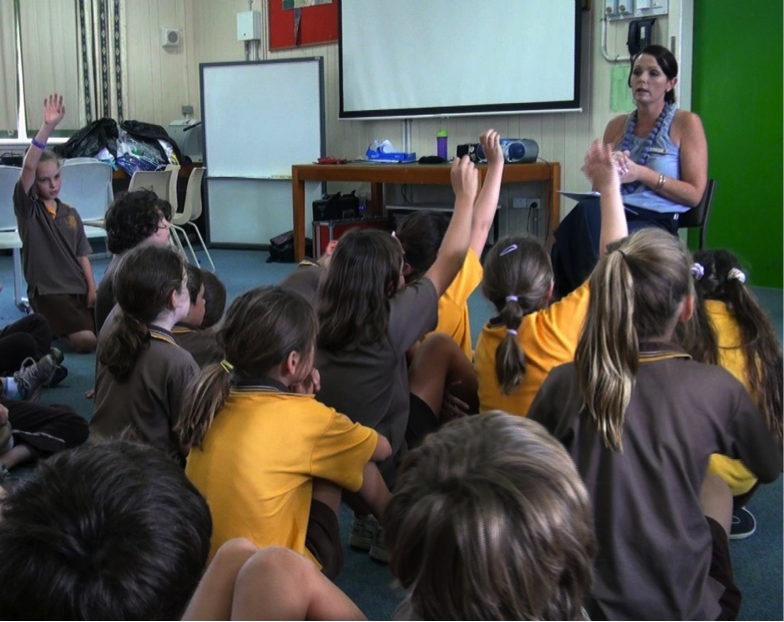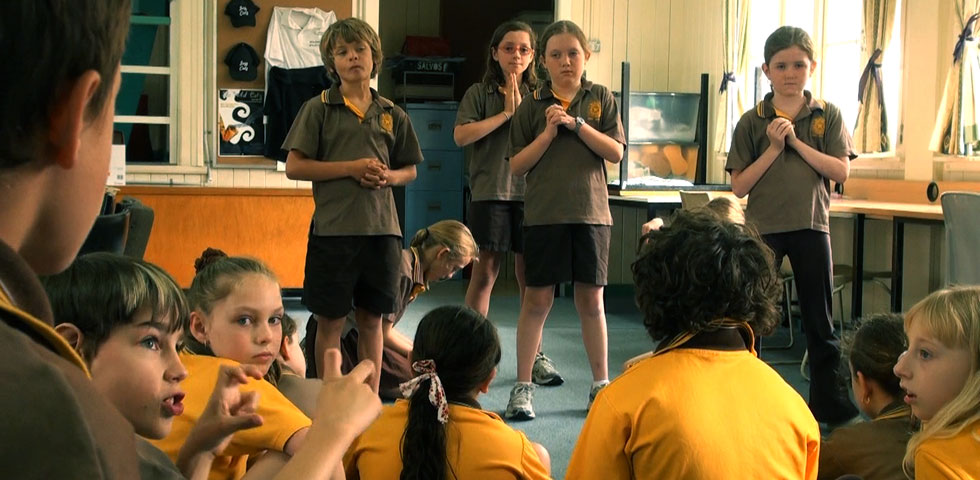
Drama
STUDENT LEARNING
In process drama, both dramatic action and learning build up over time, leading to deep knowledge rather than simple facts. The students worked intensively in blocks of time and collaboratively, with the teacher and each other, to create their own narrative. For this drama, full student participation in the sequence of activities was vital to their knowledge and understanding of dramatic art.
Students learned how to Students worked in a range of roles in this drama: reporters, people from the town of Travancore, individuals with a range of viewpoints and child labourers. They showed that they had accepted these roles by changing their posture, gesture and language to suit the role. and work effectively in a range of roles (as well as sustain them over periods of time), and to This is an important skill in the development of understanding of how to structure drama. For example, the students while in-role as reporters discussed and planned how to prepare and present information to the Maharajah; while out of role, they planned 'good' questions and what they could do to make the drama more interesting., such as interacting with the ITV Producer or the Maharajah, and then planning questions and action with each other. The students also learned to manage tension within the drama by unravelling the mystery, meeting deadlines, dealing with the unexpected and coping with urgent tasks.
They developed an understanding of This usually refers to scripted text spoken by two or more characters. Students created and refined their own dialogue in this drama and told us that they liked to do that much more than learning words that other people had written. in drama (vocabulary, registers, structuring questions). Students constructed diverse language texts for a range of purposes, and working with rich and complex language, they practised difficult foreign pronunciation, altering their Every social situation has its own appropriate and effective language, known as its register, which includes the degree of formality, the forms of address, the appropriate status levels for initiating and responding and suitable vocabulary. This drama challenges students to alter their language registers to fit very different contexts. to suit the context. Much of the work required them to create and respond spontaneously; for example, in the 'hot seating' of the mother and child who worked for the Maharajah.
Students were also required to prepare a text and a presentation for an Any presentation of drama work to others involves being conscious of the audience watching the action, so the work needs to be seen and heard. In the case of this drama, the students were the audience for each other’s work. In some cases, drama work can be prepared to share with an audience of students from other classes, parents or others from the community., including considering location and how best to see and hear the dramatic action. They developed skills in This is a key skill in drama work that is being prepared for performance, and often forgotten in the teaching-learning process. Students need to learn how to rehearse and refine work for performance. Reflection is a key strategy in rehearsal, and students should be aware of timelines, space, purpose and audience throughout the rehearsal process. and refinement of dramatic action for the purpose of sharing their work with others. They created persuasive texts and constructed short, group-devised theatre presentations intended to be shared with others. Students developed rituals, with an awareness of how space and levels can be used to create, enhance and change mood. They developed an understanding of symbols and how we can endow everyday objects with symbolic meaning. By stepping in and out of the drama context during and after the drama, especially in the reflective 
Talk chair sessions, students also applied metacognitive strategies to identify their own learning and progress throughout the unit.
In other learning areas, the dramatic language learning enhanced students' oracy, and they learned both cultural understanding and SoSE, which included coming to understand the historical, religious and cultural context of India, and some of its contemporary dynamics and challenges. They were also introduced to and practised a basic Indian dance form, Kathakali.
For assessment, the focus was on the students' oracy skill development, using a specially devised checklist, and also informal reflection checks to identify how far the students could identify the making, presenting and responding activities, as well as content from other key learning areas.

Simultaneously making and responding in drama.